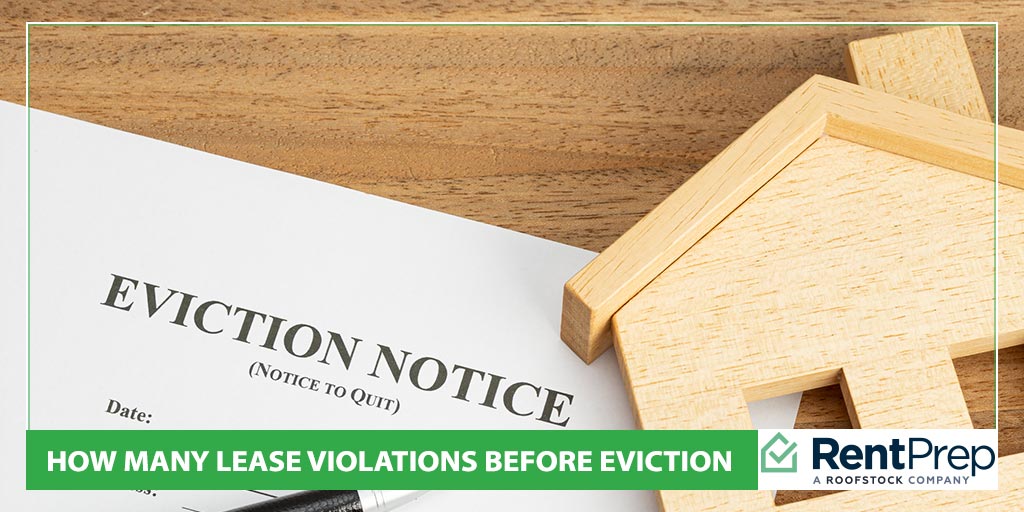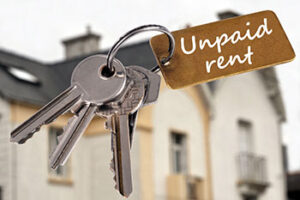
As a landlord, have you ever pondered the tipping point for eviction when a tenant crosses the line and violates their lease in some way? You’re in the same boat as many landlords. Lease breaches can turn the landlord-tenant dynamic into a legal maze, especially when it comes to seemingly minor infractions like a late rent payment or a noisy neighbor complaint.
Sure, you know the basics, but real-world scenarios often have twists and turns. From unruly behavior to consistent late rent payments, lease violations can escalate to eviction. But here’s the kicker: There’s no magic number of infractions that automatically triggers eviction.
In this guide, we’ll cut through the confusion surrounding lease violations and their repercussions. We’ll start by explaining what qualifies as a breach of lease terms, then dive into common violations and savvy strategies for resolving issues before eviction enters the picture.
We’ll also break down the thresholds that turn lease violations into grounds for eviction, weighing factors like severity, frequency, and the nature of the infractions. By the end, you’ll have the basics of the eviction process, just in case it becomes your next move.
Table Of Contents: Lease Violations And Eviction
What constitutes a lease violation, and at what point can tenant lease violations become a justification for eviction?
- Understanding And Managing Lease Violations
- When Are Lease Violations Grounds For Eviction?
- The Legal Process Of Eviction
- FAQs – Lease Violations
- Avoid Lease Violations Where Possible
Understanding And Managing Lease Violations
Lease violations are any violation of the lease agreement, which is the legal contract that governs the relationship between landlord and tenant. Lease violations happen frequently. Some are minor, such as putting a nail in a wall to hang a picture, and some are serious, such as not paying rent or subletting the property without permission.
Some minor lease violations can be solved with a conversation, others require a further warning, and others can be grounds for an immediate eviction notice. Below are some of the most common serious lease violations and how they can be prevented and managed.
Unpaid Rent

Undoubtedly, one of the most common and frustrating lease violations for landlords is unpaid or late rent. To easily track payments, the lease agreement should be specific about how much rent is paid, when, and by what method. It should also include consequences for late rental payments, which can vary according to state laws.
In New York, landlords are required to give tenants a five-day grace period for rent payments before taking action. After five days, the landlord can charge late fees, but the amount is capped at $50 or 5% of the monthly rent, whichever is less. The landlord should issue a formal letter to the tenant, asking them to pay the rent and telling them the consequences if they do not.
But, if a tenant stops paying rent altogether, this can be difficult to resolve. If the tenant is unwilling to pay in full or leave, you’ll usually need to follow up with a notice to vacate and possibly file for eviction. It’s important to note, however, that tenants can withhold rent in certain circumstances, for example, if the landlord does not address maintenance issues.
If you have issues with unpaid rent, but the tenant wishes to resolve the situation and continue living in the property, you can draw up a payment contract for the outstanding funds. Still, you’re also within your rights to evict.
While landlords might be able to understand a one-off late payment, habitual late payment can escalate to the level of a serious lease violation.
Long-Term Guests
While tenants have the right to have guests, the lease agreement should include all adults living in the home. When a guest stays long-term, the line between guest and tenant is blurred, which can violate the lease’s occupancy terms.
Ideally, a lease agreement should include a maximum occupancy limit and a maximum limit on how long guests can stay before they are considered long-term guests or tenants. You can include consequences for violating this condition, such as charging a rental fee for additional people or terminating the lease.
If you discover that a tenant has a long-term guest, your first step is often to send them an official warning stating that the guest must leave or be added to the lease agreement as a tenant, which may lead to an increase in rent. If they fail to comply, you could then proceed with lease termination.
Unauthorized Pets
Landlords don’t want to be unreasonable about pet ownership, but large pets or multiple animals can cause serious damage to properties. Landlords are within their rights to limit the kinds of pets in their homes (except for service animals).
To better manage pets, landlords can charge a separate pet deposit to cover costs such as deep cleaning. The lease should detail the types and number of pets allowed, and you can include conditions such as a fine or eviction for unauthorized pets.
Property Damage

Accidents happen, of course, and property damage can occur as part of daily life. Usually, when a tenant accidentally damages an appliance or breaks a window, they offer to pay to fix it. But sometimes tenants refuse to pay for their mistakes or even damage rental property intentionally.
For this reason, the landlord should always document the property’s condition before a tenant moves in so that, if necessary, they can later prove what damage was pre-existing and what was caused by the tenant. The tenant should also sign off on the property documentation before moving in.
This documentation can then be used as a baseline when inspecting the property, and you can ask the tenant to pay for any damage they might have caused. The lease should include a clause stating they will be asked to do this.
You can pursue eviction if the tenant is clearly causing excessive or deliberate damage or refusing to pay for the damage.
Improper Use Of The Property
The lease agreement should include how a tenant is allowed to use a property. In most cases, this will be limited to residential use, including as a home office, since so many people now work from home at least some of the time.
However, the rental agreement can forbid commercial uses such as running a retail shop or subletting for short-term holiday rentals—many renters who sublet never inform their landlords, even though this may directly violate their lease.
The lease agreement should explicitly explain what is and is not permissible use of the property and the consequences, which can be a fine or eviction at the landlord’s discretion.
Noise Violations
While noise violations might not seem as serious as property damage or nonpayment of rent, they can cause a significant problem if there are multiple complaints. This can be especially problematic in apartment complexes where you, as the landlord, are responsible for maintaining the overall ambiance of the community.
Leases often cover noise violations under a general nuisance behavior clause, including any persistent and egregious behavior that threatens the health, safety, or comfort of neighboring tenants. This clause is often stated in general terms to cover unexpected behavior, but landlords can include examples of specific behavior, such as making excessive noise after a certain hour.
All complaints should be kept on file, and a warning letter should be sent to the tenant in each case. This is important because if you choose to pursue eviction, you’ll need to show evidence of a pattern of behavior and evidence that the tenant has been informed about their problematic behavior but continued to do it anyway.
When Are Lease Violations Grounds For Eviction?
Are all lease violations considered grounds for eviction? Technically, yes. The lease is a legal contract, and if a tenant breaks the conditions of that contract, the landlord is within their rights to ask them to leave and pursue legal eviction if they refuse.
However, it would be extremely challenging if you decided to evict a tenant for putting two nail holes in the walls to hang a couple of pictures or for one noise complaint in six months.
If the tenant refuses to leave because they think you’re being unreasonable, you would have to demonstrate in court that you have grounds for eviction and would be hard-pressed to make a case. As well as spending money on a case you would likely lose, you may open yourself up to a countersuit for discrimination or harassment.
So, how many lease violations do you need before you can reasonably pursue eviction? It depends on the type of violation and the specific circumstances.
Financial violations are the most straightforward. If the tenant still has not paid their rent after the accepted grace period, which is five days in New York, for example, the landlord must send them an official Notice to Pay or Quit, which often gives a three-day deadline but can be longer depending on state law. If the rent still isn’t paid by then, the landlord can file for eviction, and the hearing usually takes place within 10 to 17 days. In New York, if the tenant pays the outstanding rent before the eviction hearing, the landlord must accept the payment, and the hearing will be canceled.
If the landlord wants to evict for repeated late payments, this becomes an eviction for a general lease violation rather than non-payment, and a hearing before the court will be required.
Whether you can file for eviction based on a general lease violation depends on the type of violation. For example, deliberate property damage or using the property for commercial purposes, such as running a coffee shop, may be considered serious enough that one violation is sufficient to pursue eviction. An incident of severe anti-social behavior, such as domestic violence or violence against neighbors, would also be considered enough as a one-off violation for eviction.
But to successfully pursue eviction for noise complaints, minor unintentional property damage, or the occasional long-term guest, you’d likely have to demonstrate multiple violations and the negative impact of these activities.
This is why it is imperative that you, as a landlord, document everything to provide evidence if you need to make your case in front of the local housing court.
The Legal Process Of Eviction
If you do decide to pursue eviction for lease violations, what can you expect the process to be?
First, before you can even file for eviction, you must issue the tenant a notice to vacate letter. This notice should give them a specific time to either resolve the issue or leave the property.
If the tenant does not respond to this notice, you will start the formal eviction process, which consists of the following steps:
- File the eviction lawsuit at your local housing court with evidence for why you are filing, and pay the appropriate filing fee.
- The court should inform the tenant of their court date, though you may need to be involved depending on your jurisdiction. Waiting for a court date is often the longest part of the process.
- Gather documentation to prove lease violations to the court.
- Attend your hearing and present your evidence. If the tenant believes you’re at fault, they can challenge your accusations or even file a countersuit.
- Assuming you win the case, wait for the court to execute eviction. They will usually give the tenant a certain period to vacate. If the tenant doesn’t move out by that deadline, you can inform local law enforcement, and they will take it from there. You cannot forcibly remove the tenant from the property even if you win an eviction case.
- Reclaim your property, deal with the aftermath, such as abandoned personal property or property damage, and potentially pursue the former tenant for payment in small claims court if necessary.
You can read our full landlord’s guide to the eviction process here.
FAQs – Lease Violations
Below are answers to some of the questions landlords frequently ask about lease violations and evictions.
What is a cure or quit notice?
A cure or quit notice is a formal letter the landlord sends to the tenant specifying a lease violation and giving the tenant a specific period to either “cure” (fix) the situation or vacate the property.
Can a landlord evict a tenant for a single lease violation?
The answer depends on the severity of the violation and local laws. Minor violations generally require multiple notices before they can result in eviction, while serious violations, such as illegal activities, are sufficient grounds for eviction.
Avoid Lease Violations Where Possible
Dealing with lease violations can be a major headache for landlords, even when they don’t lead to eviction. The best thing a landlord can do is try to avoid lease violations in the first place by having lease agreements that clearly lay out all the terms and conditions and choosing reliable tenants who are most likely to adhere to the conditions of their lease.
This is why tenant screening is essential. It doesn’t just give you a credit check to confirm whether the tenant can afford to pay the rent; it can also dig into parts of their rental history to see if they have a history of lease violations. You can learn more about RentPrep’s tenant screening services here.
Note: RentPrep does not provide tax, legal, or accounting advice. This material has been prepared for informational purposes only and is not intended to provide, and should not be relied on for, tax, legal, or accounting advice. You should consult your own tax, legal, or accounting advisors.

